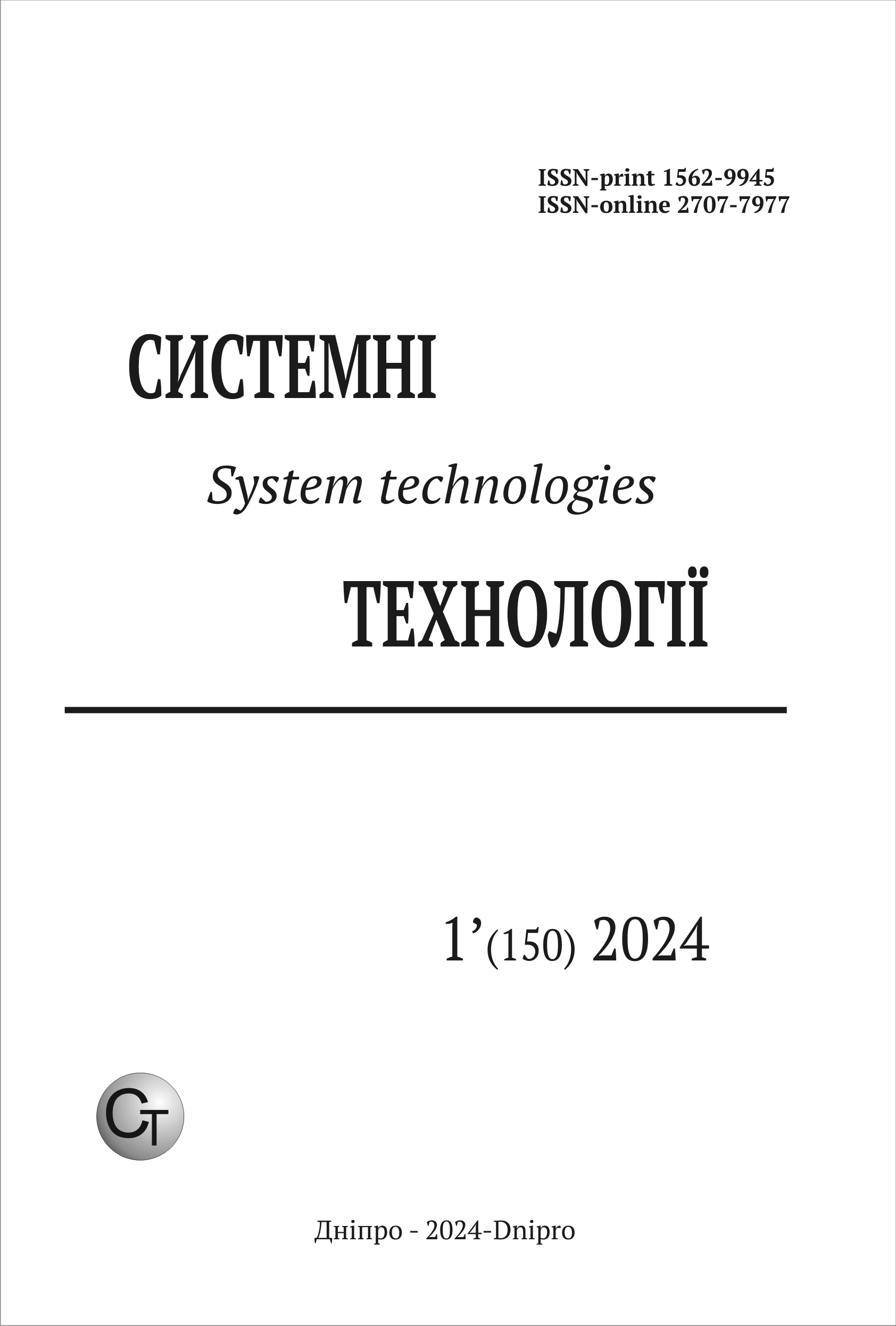ПРОЄКТУВАННЯ БАГАТОПРОДУКТОВИХ ТРАНСПОРТНИХ МЕРЕЖ З ДИСКРЕТНИМИ ПОТОКАМИ МАГІСТРАЛЬНИХ ДАННИХ
DOI:
https://doi.org/10.34185/1562-9945-1-150-2024-07Ключові слова:
транспортні мережі, магістральні дані, клас потоку, кооперація транспортних потоків, математична модельАнотація
Стаття зосереджується на аналізі існуючих досліджень і публікацій у цій галузі, звертаючи увагу на внесок закордонних та вітчизняних вчених у розробку моделей та методів управління мережевими ресурсами. Більшість досліджень фокусується на детермінованих моделях та моделях, що базуються на математичних засадах теорій масового обслуговування та випадкових марківських процесів. Автор вказує на недостатність існуючого математичного інструментарію для моделювання та ана-лізу функціонування багатопродуктових мереж з дискретними потоками, що вимагає розробки нових математичних моделей і методів. Метою дослідження є розробка та аналіз ефективних підходів до проєктування багатопродуктових транспортних ме-реж з особливим фокусом на дискретних потоках магістральних даних. Автор зазна-чає, що це включає в себе розробку нових підходів та методів для ефективного управ-ління та оптимізації розподілу ресурсів, а також моделювання специфіки дискретних потоків у контексті магістральних транспортних систем. Важливою частиною до-слідження є створення ієрархічної структури системи для автоматизованого управ-ління ресурсами та розподілом потоків у великомасштабних мережах. Автор наголо-шує на необхідності розробки методології, яка інтегрує вже існуючі досягнення у цій галузі та дозволяє ефективно розв’язувати практичні задачі, пов’язані з довгостроко-вим розвитком, поточним плануванням та оперативним управлінням у масштабних мережах. Така методологія має включати моделі різних рівнів агрегування та бути придатною для всіх рівнів ієрархічної структури мережі. Дослідження також вклю-чає розгляд математичних моделей та алгоритмів для моделювання та аналізу функ-ціонування многопродуктових мереж з дискретними потоками.
Посилання
Agadaga, G.O., & Akpan, N.P. (2019). A Transshipment Model of Seven-Up Bottling Company, Benin Plant, Nigeria. American Journal of Operations Research, 9(3), 129, 129-145. Available at: https://10.4236/ajor.2019.93008 (accessed January 09, 2024).
Alshamsi, A., & Diabat, A. (2015). A reverse logistics network design, Journal of Manu-facturing Systems, 37(3), 589–598
DOI: https://doi.org/10.1016/j.jmsy.2015.02.006.
Anderluh, A., Nolz, P.C., Hemmelmayr, V.C. & Crainic, T.G. (2021). Multi-objective op-timization of a two-echelon vehicle routing problem with vehicle synchronization and “grey zone” customers arising in urban logistics. The European Journal of Operational Research, 289, 940–958.
Herrera, O., Jerez, V., Arrieta, N., & Camacho, G. (2022). Transshipment and routing model for multi-product planning and distribution at a refreshment company in Bogota, Co-lombia. Journal of applied research and technology, 20(4), 408-417. DOI: https://doi.org/10.22201/icat.24486736e.2022.20.4.1330.
Keshavarz-Ghorabaee, Mehdi, Amiri, Maghsoud, Olfat, Laya, & Khatami, Firouzabadi, Ali. (2017). Designing a multi-product multi-period supply chain network with reverse logis-tics and multiple objectives under uncertainty. Technological and Economic Development of Economy, 23, 520-548.
DOI: https://doi.org/10.3846/20294913.2017.1312630.
Ma, R., Yao, L., Jin, M., Ren, P., & Lv, Z. (2016). Robust environmental closed-loop sup-ply chain design under uncertainty. Chaos, Solitons & Fractals, 89, 195–202. DIOI: https://doi.org/10.1016/j.chaos.2015.10.028.
Makedon, V., Dzeveluk, A., Khaustova, Y., Bieliakova, O., & Nazarenko I. (2021). Enter-prise multi-level energy efficiency management system development. International Journal of Energy, Environment, and Economics, 29(1), 73-91.
Ruvalcaba Sandoval, D., Olivares-Benitez, E., Rojas, R., & Sosa-Gómez, G. (2021). Matheuristics for the Design of a Multi-Step, Multi-Product Supply Chain with Multimodal Transport. Applied Science, 11, 10251.
DOI https://doi.org/10.3390/app112110251.
Selsam, D., Lamm, M., Bunz, B., Liang, P., de Moura L., & Dill D.L. (2019). Learning a SAT solver from Single-Bit supervision. 7th International Conference on Learning Represen-tations, ICLR May 6 – 9, 2019. New Orleans, USA.
Shaw, K., Irfan, M. Shankar, R. & Yadav, S.S. (2016). Low carbon chance constrained supply chain network design problem: a benders decomposition based approach. Computers & Industrial Engineering, 98, 483–497.
Shelukhin, M., Kupriichuk, V., Kyrylko, N., Makedon, V., & Chupryna, N. (2021). Entrepreneurship Education with the Use of a Cloud-Oriented Educational Environment. In-ternational Journal of Entrepreneurship, 25(6), Available at: https://www.abacademies.org/articles/entrepreneurship-education-with-the-use-of-a-cloudoriented-educational-environment-11980.html (accessed January 09, 2024).
Tarvin, D.A., Wood, R.K., & Newman, A.M. (2016). Benders decomposition: Solving binary master problems by enumeration. Operations Research Letters, 44, 80–85.
Завантаження
Опубліковано
Номер
Розділ
Ліцензія
Авторське право (c) 2024 Системні технології

Ця робота ліцензується відповідно до ліцензії Creative Commons Attribution 4.0 International License.















